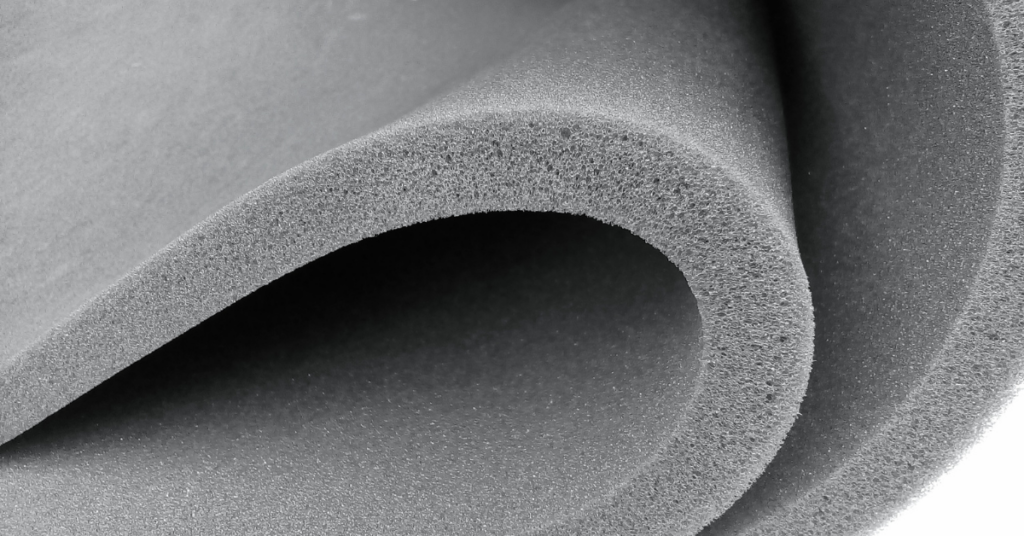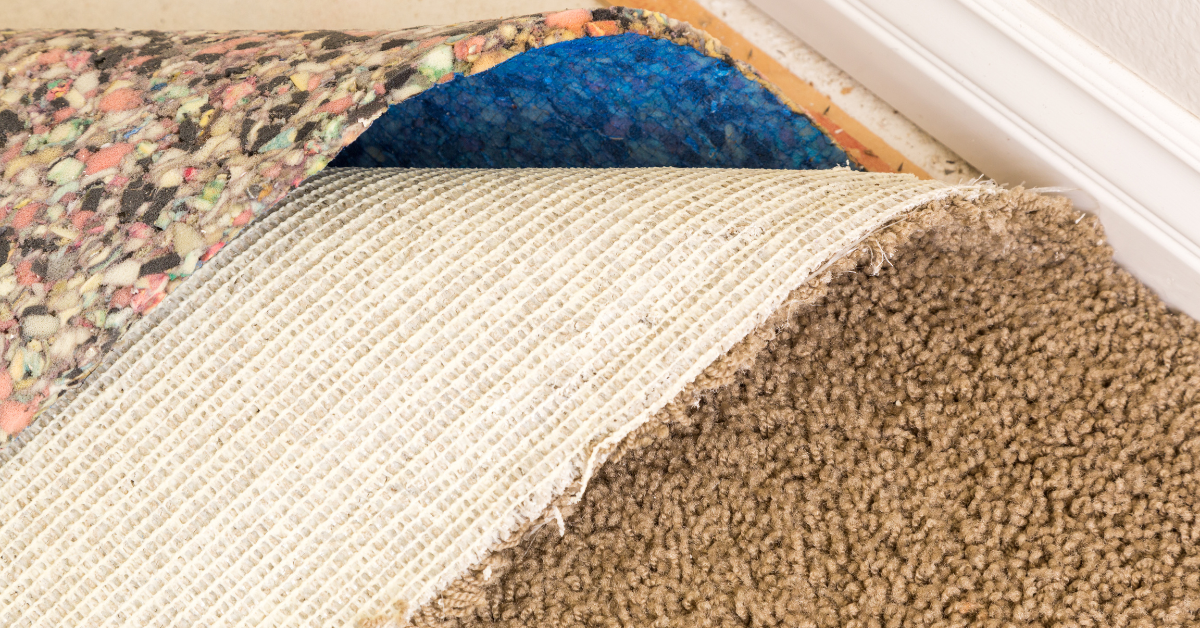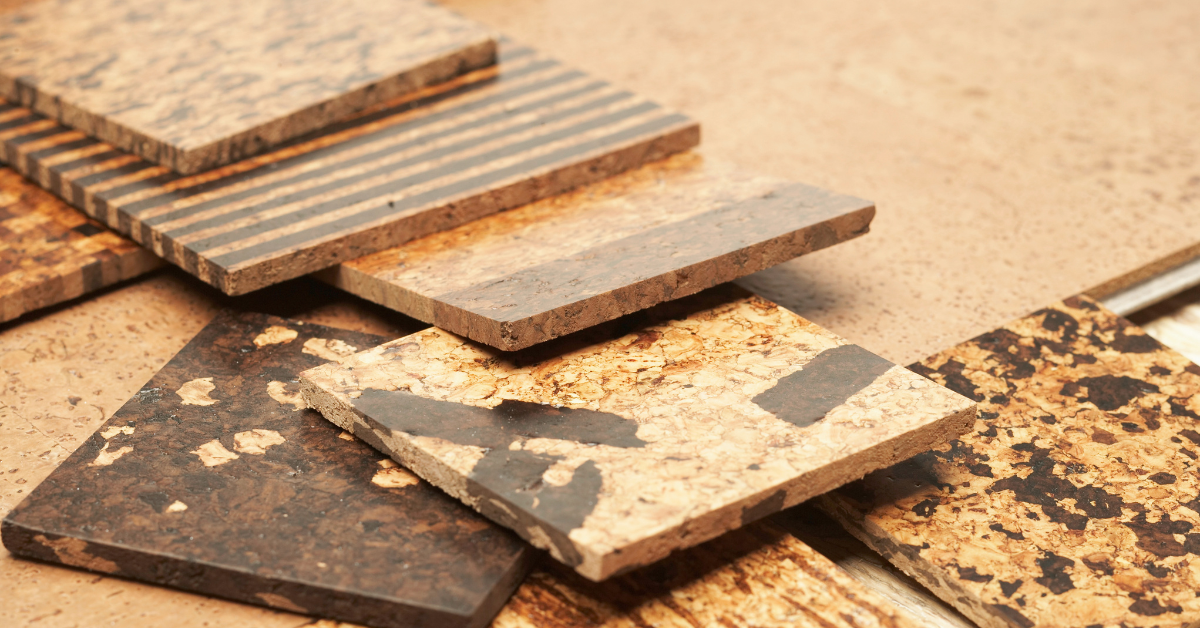Carpet padding – also known as carpet underlay – is a layer of cushioning that sits underneath your carpet roll. It can make the floor of your room comfier, and extend the life of your carpet by preventing wear and tear – but does carpet padding for soundproofing work?
Quick answer – Yes, carpet padding for soundproofing is effective, especially when it comes to reducing impact noise and absorbing airborne noise.
In this carpet padding soundproofing guide, we are going to ask how much noise reduction carpet padding can offer, tell you what impact noise and airborne noise mean, and explain how carpet padding is most effectively used for soundproofing.
We’ll also ask what the best carpet padding for soundproofing is, and answer some carpet underlay FAQs. Jump to the section you want below.
Skip to:
- Does carpet padding for soundproofing work?
- What is the best carpet padding for soundproofing?
- How to choose the right carpet padding for you
- Carpet padding for soundproofing: FAQs
Does carpet padding for soundproofing work?
You might associate carpet padding with providing comfort, giving you that satisfying spring under your feet when you are walking around the house. Then there is the protective element – carpet padding is located in between your carpet and the base floor, and this can slow wear and tear, as well as minimize furniture indentations.
But carpet padding can also be very useful for sound insulation. You shouldn’t see carpet padding as a universal fix for any kind of sound disturbance (even the most versatile soundproofing materials, such as mass loaded vinyl (MLV) have their limitations. However, when used in the right way, soundproofing with underlay can reduce sound transmission in your home or workplace, making your life quieter.
How much does carpet padding reduce noise?
When working out how much noise reduction a structure or material offers, the noise reduction coefficient (NRC) metric can give you a good guide. When it comes to carpet underlay, the overall NRC of the entire floor is usually what is considered.
Without carpet underlay, the approximate NRC of a carpeted floor is 0.35. This means that the floor absorbs 35% of the sound that reaches it. According to the Carpet Institute of Australia, when sufficient carpet underlay is installed, the NRC of the floor will be roughly doubled. So with carpet underlay, the NRC of a floor jumps from 0.35 to about 0.65.
In our table below, you can see the approximate NRC of a floor with and without a carpet, compared to other materials used in flooring:
| Material | NRC (approximate) |
| Carpeted floor with underlay | 0.65 |
| Carpeted floor | 0.35 |
| Cork floor tiles | 0.10-0.20 |
| Wood | 0.5-0.15 |
| Painted concrete | 0.0-0.05 |
| Marble | 0.0 |
Note – NRC ratings can vary according to the thickness of the material.
Now, before you learn how carpet padding is best used, it’s important to understand the different types of noise we are dealing with.
Impact noise and airborne noise
Soundproofing can help you to reduce two main types of noise: 1) impact noise and 2) airborne noise.
Impact noise
Impact noise is generated by direct contact with a surface. This might be footsteps on the floor, an object being dropped, or furniture being moved about.
You might be disturbed by impact noise from a room above, or an adjacent room, as it is transmitted through floors and walls.
Airborne noise
Airborne noise refers to sounds such as voices, TV, or music. These are sounds that travel through the air and can pass through walls, floors, and ceilings.
Which noise is carpet padding best at reducing?
Carpet padding can reduce both impact noise and airborne noise to a degree.
Because it provides an extra layer of cushioning to flooring, carpet padding can help to absorb impact energy from footsteps or dropped objects, reducing the transmission of noise. For this reason, if you are being disturbed by the noise from the room above, installing carpet padding can be a good soundproofing method. Carpet padding can help to reduce the sounds of footsteps, dropped objects (a child playing, for example), or furniture being moved around in the room above.
The thicker and denser the carpet padding, the more likely it is to be an effective blocker of impact noise. This will depend on the type of material the carpet padding is made from. You can learn more in another section of this guide – skip to ‘what is the best carpet padding for soundproofing?’
Of course, if the room above is not your property, you may want to look at sound insulation in your ceiling, instead. Check out some ceiling soundproofing tips here in our ‘How to Soundproof a Basement’ article
Because it is a better sound absorber than blocker, carpet padding is better at reducing echoes and reverberations within a space, rather than blocking noise. This ability to absorb sound is the reason why it is good at reducing impact noise.
For blocking airborne noise coming through a floor or wall, it is best used in tandem with other soundproofing methods, such as insulation or a change in structure. This is especially true if you are being disturbed by noise coming through the wall from an adjacent room or property.
Key takeaway – don’t rely on carpet padding to cut out airborne noise such as voices or music. However, carpet padding is a good solution to cut the transmission of impact noise going through a floor into the room below. It can also be good for improving the acoustics within a room, providing sound absorption and reducing echo.
What is the best carpet padding for soundproofing?
Now you’ve read about how carpet padding is best used, let’s move on to the best type.
There are many carpet padding materials available on Amazon that you could use for soundproofing. Which one you choose will likely come down to your budget, and the soundproofing effect that you want to achieve. We’ll come on to our final recommendations after introducing some options.
Here are four common types of carpet padding which you can find on Amazon:
1. Felt carpet padding
This is the modern type of carpet underlay. Felt carpet padding, usually made from wool, is recognized as being a sensible choice for added comfort and heat insulation. This type of fiber carpet underlay is good at reducing impact noise such as footsteps and dropped objects. Its good sound absorption means it can also improve the acoustics in a room, reducing echo.
Felt carpet padding is sometimes manufactured with a rubber layer, adding to its sound-blocking ability. It offers the added advantage of durability, supporting the carpet above in withstanding heavy foot traffic.
Pros
- Reduces impact noise
- Improves acoustics
- Very effective heat insulation
Cons
- Not as soft as foam carpet padding
Best for: Reducing impact noise while improving room acoustics
Check felt carpet padding price on Amazon
2. Rubber carpet padding
Rubber is a very effective soundproofing material, and that is no different when you are thinking about carpet padding. Get yourself some rubber soundproofing underlay and you can expect a drop in the impact noise that travels through to the room below, as rubber is good at preventing vibrations from passing through the structure of your floor.
You will usually find that rubber carpet padding feels firmer underfoot than felt or foam underlay. However, some of the newer sponge-type underlays you can find do a better job of providing comfort. We found rubber carpet padding in sizes ranging from 2 mm to 15 mm in thickness.
Pros
- Highly effective impact noise reduction
- Durable
Cons
- Very little thermal insulation
Best for: Reducing noise from foot traffic
Check rubber soundproofing underlayment price on Amazon
3. Foam carpet padding

Do you have kids running around your living room or playroom like maniacs on a daily basis? The banging and thudding might make it feel like you are living in a drum kit! Foam carpet padding is a good solution – because it will provide that extra cushioning that adds safety for the kids, while also doing a great job of absorbing airborne noise, reducing echoes and reverberations.
Foam carpet padding can be seen as ‘the new generation’ of carpet underlay, compared to the more traditional rubber. It is typically cheaper, more environmentally friendly (often manufactured from recycled sponges), and offers a degree of thermal insulation. It is usually made from polyurethane and is also known as PU foam.
Pros
- Soft, comfortable feel
- Very good sound absorber, reducing echo
- Inexpensive
Cons
- Not the best at reducing impact noise heard downstairs
Best for: Comfort and reducing echo in room
Check foam carpet padding price on Amazon
4. Crumb rubber carpet padding
A variation of the rubber underlay you read about earlier in this list. Crumb rubber underlay is extremely dense and also very durable. If you are struggling with impact noise from foot traffic in a room or on stairs, this is a good option.
You might be familiar with crumb rubber already – it is used to provide support on artificial soccer pitches, with small fragments being dispersed in between artificial grass. It is also used as a surface for many children’s playgrounds.
Unlike the traditional rubber underlay, crumb rubber padding is able to offer heat insulation. It is hard-wearing, and the only option in this article that recovers easily from indentation that is the result of loading from heavy objects such as furniture.
It is usually manufactured from old car tires, making it an environmentally friendly choice.
Pros
- Very dense, making it good impact noise blocker
- Durable and resistant to indentation
- Environmentally-friendly
Cons
- Heavy and tricky to handle
Best for: Stairs or rooms that have heavy foot traffic
Check crumb rubber underlayment price on US rubber
How to choose the right carpet padding for you
The best underlay for your home will depend on your objectives and your budget:
👉If you are trying to reduce noise from heavy foot traffic in an upstairs room or under a staircase, consider rubber padding crumb rubber padding, or a combination of felt and rubber.
👉If you want the multiple benefits of extra comfort and heat insulation, along with a degree of soundproofing ability, go for foam carpet padding.
👉If you want to maximize comfort and safety for your children while significantly improving the acoustics in a room (reducing echo and reverberation), choose foam carpet underlay.
👉If you have a tight budget and want to improve the acoustics of your room while adding comfort, buy foam carpet underlay.
Carpet padding for soundproofing: FAQs
How thick should my carpet padding be?
We reckon 10-12 mm is a sweet spot for carpet padding. Of course, this depends on the material you are using. Some forms of rubber go all the way up to 20 mm in thickness, but for a residential property, it is unlikely you will need it this thick.
Can I use combinations combinations of carpet padding?
For sure. You might want to get the best of both worlds by using say, 5 mm of rubber underneath 5 mm of felt carpet padding. This is the reason why some felt underlays have a layer of rubber at the bottom. The rubber performs the role of sound blocker and protection, while the felt layer provides comfort, heat insulation, and a degree of sound absorption.
How can I measure the noise I’m hearing from above?
If you are hearing noise from the property above, you might want to measure it to give you some backup in a dispute. A word of warning – there is serious doubt as to the accuracy of smartphone apps. A study by the University of Colorado found that none of the Android apps that were tested showed a “meaningful degree of accuracy” in measuring impact noise. Apple phones performed better, with the Sound Meter app available for iPhone cited by the research.






